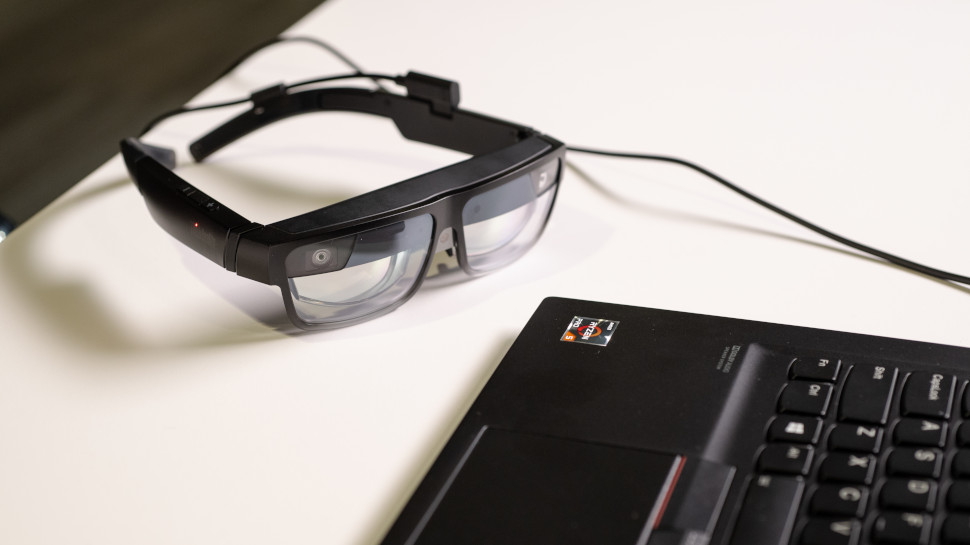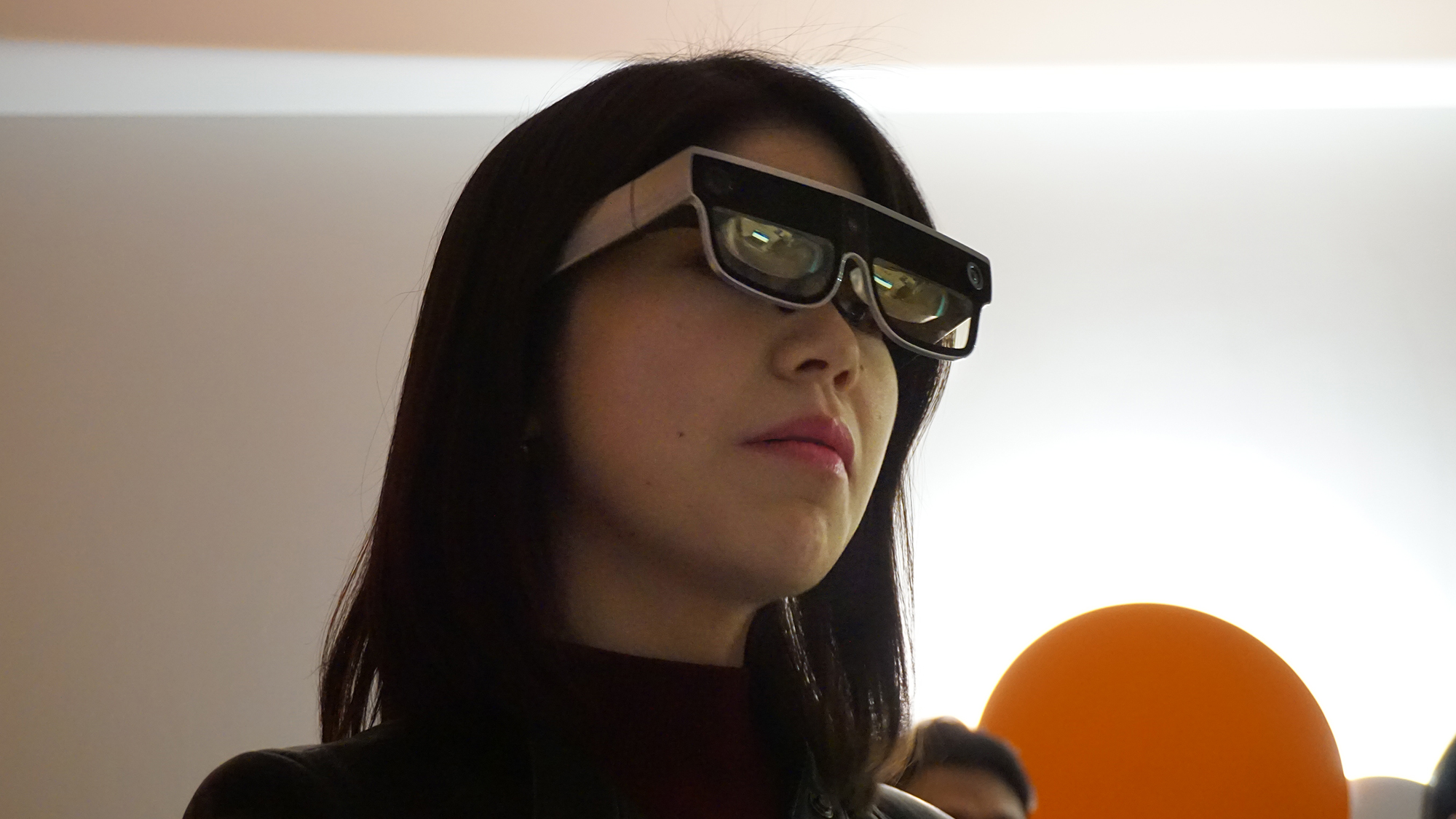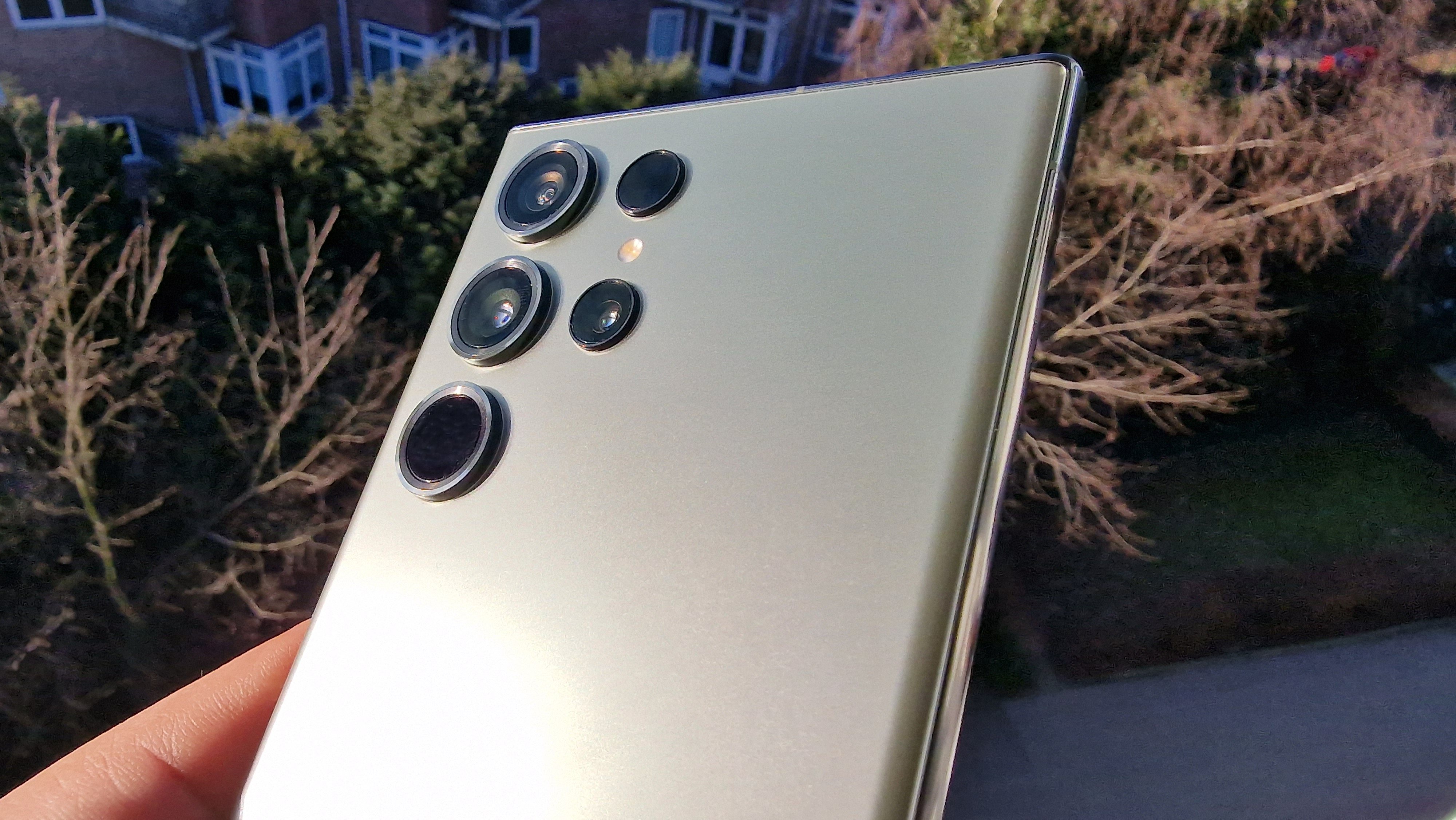At MWC 2023 in Barcelona, Qualcomm was in its element. As one of the biggest manufacturers of phone and tablet processors in the world, the San-Diego-based company has its fingers in many pies at events like this, from its new Snapdragon 8 Gen 2 chip powering the Samsung Galaxy S23 Ultra to a wealth of panels and discussions surrounding Wi-Fi 7 and 6G.
One particularly interesting area for me was Qualcomm’s determination to forge ahead in what it calls ‘XR’ – that’s ‘extended reality’, a catch-all term for virtual, augmented, and mixed reality wearable technology. Barring the fact that the initialism really should be ‘ER’ (though I can understand why Qualcomm would want to avoid that), there were some very impressive XR products at the expo carrying Qualcomm Snapdragon chips inside them.
Those chips included the newly-announced Snapdragon AR2 Gen 1, a purpose-built platform designed to power lighter and more efficient AR wearables, like smart glasses. Qualcomm was keen to promote its presence in Lenovo’s slick new ThinkReality A3 glasses, which I was lucky enough to test out at the event, and found to be seriously impressive.

The future of augmented reality
There’s a definite argument to be made that it’s AR, not VR, which will truly become the next frontier of tech products in the near future. VR has its uses – the best VR headsets can provide hours of fun – but it’s still a niche technology with too many drawbacks. VR gaming is an expensive hobby, and typically demands too much physical space and exertion for most people to get invested.
AR, on the other hand, has far more practical applications. You’ll probably never see someone riding the bus with a full VR headset on, but wearable tech like smart glasses are slowly – very slowly – starting to trickle into real life. Google Glass might have had a troubled start, but it did pique global interest in AR glasses, and I was excited to see such a wide range of AR products on show at MWC.
Qualcomm clearly was too; when I sat in on the company’s XR Operator Panel hosted by VP Hugo Swart, there was genuine enthusiasm regarding the future of AR wearables. Deutsche Telekom VP Sven von Aschwege stated his belief that smart glasses and similar wearable hardware will eventually replace phones completely, something that Swart (and Telefonica’s Daniel Ortega) concurred with.
Now, obviously this group of tech industry execs is bound to drum up excitement regarding XR at MWC, having as they do such a vested interest in the hardware; Qualcomm was proud to add that two new AR glasses running on Snapdragon had been revealed at the show, one from Goertek and the other from Xiaomi. Our US Editor-in-Chief Lance had some things to say about the current slew of AR products, and I have to say I agree with him. But there’s a bigger problem with Qualcomm’s glorious vision of a utopian future where we’ve all got smart specs on our faces.

Not-so-smart glasses
I’m going to set aside the major concerns about questions of pricing, practicality, and user accessibility. These issues can – and most likely will – be resolved over time as the hardware is refined and becomes cheaper to produce. Virtually every new technology begins life costing far too much money and not being viable for the average user; after all, back in the year 2000, the idea that everyone could have a touchscreen computer in their pocket seemed outlandish to most.
But there’s a different problem that Qualcomm and its partners will need to navigate, and it’s a problem that might simply not have a solution. See, that Snapdragon AR2 chip is specifically designed with distributed processing in mind; which is to say, it’s meant to connect to a smartphone with its own CPU in order to offload some of its processes and function better.
During the XR Operator Panel, we got some sales statistics thrown at us. There were around 15 million VR/AR products sold in 2022, with that number growing to a projected 20-25 million in 2023 – a huge increase that certainly indicates a hunger for wearables among the consumer base. However, if we contrast this to phone sales, 2022 saw 1.5 billion units sold. That means AR/VR sales are literally one single percent of phone sales; these numbers would certainly indicate that smart glasses aren’t about to overtake phones anytime soon.
The distributed processing issue can be pretty easily circumvented with some dedicated development of chips like the Snapdragon AR2 and XR2; sooner or later, we’re going to have chips capable of powering high-end AR products without needing a connected phone to support them. But it doesn’t solve the need for phones.

We love our phones
Let’s face it: we’re all glued to our phones all the time. According to our reader metrics, it’s statistically probable that you’re reading this very article on a smartphone or tablet. Whether you’ve got a cheap old model or one of the best phones on the market, they’re indispensable tools in the modern age.
Replacing a product that has become so utterly ingrained in our society is going to take some work, and to put it simply: smart glasses ain’t going to do it, chief. It’s very telling that some of the best AR products I tested at the event – including the consumer-targeted Lenovo Glasses T1, which I also saw at IFA 2022 in Berlin last year – work best when they’re connected to a smartphone, which becomes a controller of sorts in your hands. This is fairly common; the phone can act as a motion controller with virtual pointing capabilities in the AR overlay, or its screen can be used as a big touchpad for user input.
This is great, and both options are intuitive ways to use augmented reality glasses. The feel of a smartphone in the hands is universally familiar, so pairing it with wearables just makes sense. Some AR products (like Lenovo’s aforementioned ThinkReality A3) use external cameras and hand-tracking software, which works okay, but simply can’t provide the same degree of tactility and feedback that a physical controller does.

The perfect union of phones and AR
This is why AR glasses aren’t going to overtake phones: because they work best with phones. They’re an accessory that can make your phone better, not the next stage in portable tech’s evolution. Saying they’re going to supersede smartphones is like saying keyboards or printers are going to replace computers – which, now that I think about it, is basically what the typewriter was.
Even aside from these issues, a pair of glasses is never going to be as practical as a phone. I don’t personally wear glasses for my sight, but I do have a nice pair of sunglasses, and I try to remember to keep them in their case when I’m not using them, lest I damage them – and I spent a lot less on those than a pair of good AR glasses would cost me right now. I can slip my Google Pixel 5 in and out of my pocket with ease; the idea of having to put a pair of glasses on my face just to check my notifications sounds absurd.
Qualcomm isn’t afraid of the naysayers like me, though. Hugo Swart made the point at MWC that there was resistance to the idea of mobile internet when it was first being developed – people who said ‘what, am I going to check my emails when I’m outside?’ – and, well, we all know how that went.
But I’ve got to be honest: I don’t think smart glasses are the way of the future, and that’s honestly more to do with the strengths of smartphones than the weaknesses of wearables. Phones themselves are continuing to evolve and innovate, shifting form factors to bring us awesome products like the Oppo Find N2 Flip. And after all, the cultural staying power of phones is significant: think about sci-fi media. Is everyone wearing AR goggles in The Expanse? No, they all have fancy little glass phones. I rest my case.
stereoguide-referencehometheater-techradar